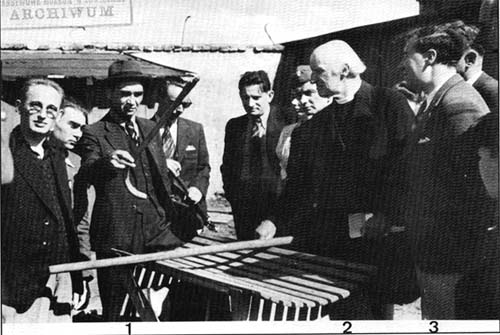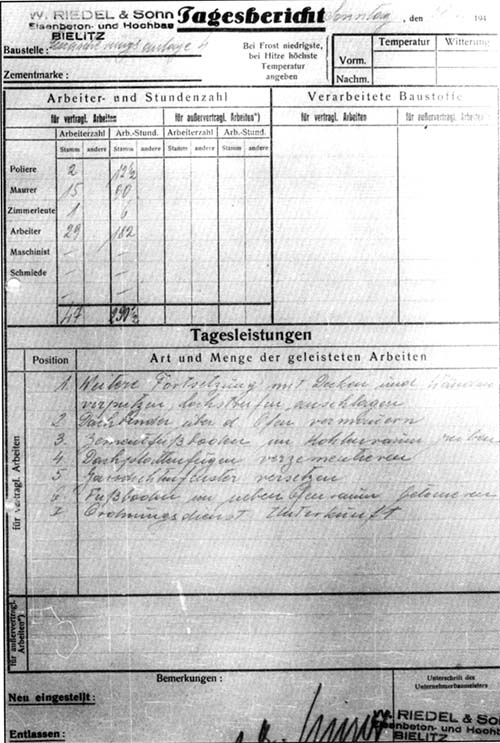|
|
 |
 |
AUSCHWITZ:
Technique
and Operation
of
the Gas Chambers © | |
|
| |
 |
Back |
 |
Contents |
Page 553 |
 |
Home
Page |
Forward |
 |
| |
| We can no longer consider Hoess to be a common criminal or
assassin. He had admittedly participated in the night of 31st May
it, on the orders of Martin Bormann and with five companions from
the from the “Freikorps Rossbach” [Bernard Jurisch, Georg Pfeiffer,
Emil Weimeyer, Karl Zabel, and Robert Zenz], in administering a
thrashing to a former schoolteacher, Walter Kadow, suspected
[without proof] of having delivered Albert Leo Schlageter, one of
Hoess’ old comrades, to the French, who shot him. The punishment
degenerated into an execution. Jurisch denounced the collective
murder and Hoess, who had nevertheless returned to the scene of the
crime with Zabel to give the body a summary burial, was condemned to
ten years’ imprisonment. This crime “frais et joyeux”*
[“Les crimes politiques en Allemagne” E J Gumbel, NRF,
Paris, 1931 page 149] found its raison d’être in the exacerbated
patriotism of the time. Hoess‘ function at Auschwitz was that of
executioner in the legal sense of the term, performing the most
sordid job in a racist totalitarian regime. He did the dirty work
for high ups incapable of contemplating the actual materialization
the actual of their mad orders. In “Commandant of
Auschwitz”, pages 173 4, Hoess writes: |
| |
“The Reichsführer SS sent various high ranking Party
leaders and SS officers to Auschwitz so that they might see for
themselves the process of extermination of the Jews, They were all
deeply impressed by what they saw. Some who had previously spoken
most loudly about the necessity for this extermination fell silent
once they had actually seen the “final solution of the Jewish
problem”. I was repeatedly asked how I and my men could go on
watching these operations, and how we were able to stand it...
This was one job that nobody envied me.” |
Hoess was fully responsible for what he did. In 1945, the
majority of people thought that that a man who had committed such
acts was a monster. But since 1974 it has been scientifically proved
that over half of the human race is capable of doing the same. The
American social psychologist Stanley Milgram has demonstrated by
experiment, as related in his book “Submission to
Authority” that 60% of normal individuals are potential
Hoesses or Eichmanns and the percentage increases when they live in
an “authoritarian” environment. The only significant exception to
this was a young woman of 31 who refused to continue the experiment
as soon as she felt that the guinea-pig was endangered by her acts,
this despite the by organizer’s emphatic orders to her to continue
the experiment. Her refusal was explained by the fact that she was
of German origin, and had spent her youth under the Hitler regime
and considered that she had seen “too many atrocities” She was in
fact “vaccinated” and very sensitive to the limits of what
constituted a reasonable order.
The Nazi regime was a
totalitarian regime based on racism. The victim, the Jew, was so
reviled as from 1933, that his extermination, the logical
consequence of this denigration, was only natural, and could be
actually carried our in a country made propitious for this action.
The other Europeans were vaguely aware of the fate awaiting the
Jews, but for their own intellectual comfort they refrained from
asking themselves the simple question of what was the real fate
implied by the complete “rejection” of the Jews. This book should
enable them, forty years after the event, to visualize the
environment and way the in which the extermination process worked,
hitherto known only to a few “initiated” officials of the Third
Reich.
Hoess was hanged because he organized and actively
participated in countless gassings that had killed between 1 million
and 1.5 million people. He claimed that he wanted by using this
method to avoid unnecessary suffering of people that he considered,
because of the conditions brought about by the war, were doomed in
advance. He stated as much in “Commandant of
Auschwitz”, page 178: |
| |
| "Tens of thousands of Jews were moved from Auschwitz... but this
was only a question of out of the frying pan and into the fire...
there was the heavy work to which the prisoners were unaccustomed
and the ever diminishing scale of rations. The prisoners would
have been spared a great deal of misery if they had been taken
straight into the gas chambers at Auschwitz." |
| In Hoess’ mind, gassing was a gentle and humane
death. |
| |
| [Photographs 21 to 25 show Rudolf Hoess during the last
year of his life. They meet our need to know what the “technician of
gentle death by gassing” looked like. Apart from the people directly
concerned, former deportees, Jews or otherwise, their families and
certain historians, few people know his face. Just before his
execution [Photo 25] Hoess seems to have reached a state of
total inner peace. He appeared calm. This surprising result is to be
attributed, in my opinion, to Hoess’ religious inclination and the
intelligent attitude if the Polish Judge Jan Sehn.] |
| __________ |
Translator's note:
* "frais et joyeux” — fresh and
joyous, crime committed with a good conscience by several people in
a joyous atmosphere. |
|
 |
|
Photo 26:
[PMO neg. no. 21023/1] |
|
| |
|
| The Polish judge Jan SEHN [1]
showing a British delegation around Birkenau in May 1945. The
visitors included the Dean of Canterbury, Dr H Johnson [2], and
Father J D Eye of Oxford [3] (Source: “Auschwitz. Hitler
extermination camp.” Interpress, Warsaw 197). The photograph
was taken in one of the two “closed” yards between huts 11 and 13
which contained a wash hut in B.IId or “Mannerlager / men’s camp”.
Jan Sehn is explaining the punishment of beating, administered on a
specially constructed horse, The “legal minimum” was 10 strokes on
the bare buttocks. Hut 11 was enclosed because it housed the
prisoners of the punishment kommando. |
|
|
| |
 |
| |
Photo 27:
[PMO file BW 30/28, page 73]
(PMO microfilm
1256) |
| |
|
| |
Tagesbericht.
Einäscherungsanlage [EÄA] 4 [Krematorium IV]. [In their daily work
reports and time sheets the employees of Riedel & Son mixed up
the “usual” designations, the official ones and their own when
referring to Krematorium IV and V, so that the former may be
alternately referred to as EÄA 3 or EÄA 4 or Kr 3, and the latter as
EÄA 5 or Kr 4 or Kr 5!]
In this report for 28h February 1943
concerning Krematorium IV, item 5 reads:
“Gas[s]dicthenfenster versetzen / fit gas-tight shutters.”
| |
| |
AUSCHWITZ:
Technique
and operation
of the gas chambers
Jean-Claude Pressac
© 1989, The
Beate Klarsfeld Foundation |
 |
Back |
Page 553 |
Forward |
 |
|

